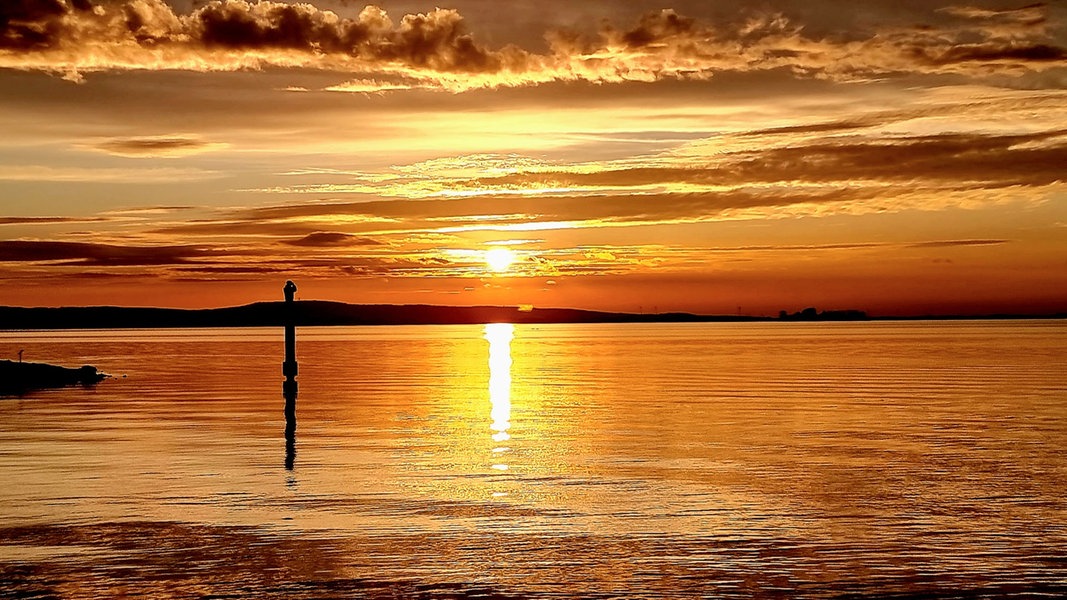Status: 06/20/2023 3:20 p.m
June 21, 2023 is the beginning of summer and the longest day of the year. The summer solstice is celebrated as midsummer, especially in Scandinavia. Many myths surround this day and the shortest night.
Summer solstice – which sounds romantic and mysterious to many, initially only means that the longest day of the year and thus the maximum time span between sunrise and sunset has been reached. In Germany, this day – as in the entire northern hemisphere – normally falls on June 21st, in leap years on June 20th. The sun is then higher above the horizon than at any other time of the year. The following applies: the further north the location, the longer the day.
Longest day and shortest night
In Hamburg, for example, on June 21 there are 17.02 hours between sunrise (4:50 a.m.) and sunset (9:53 p.m.). In Munich, June 21 is about an hour shorter, the sun does not rise until 5:13 a.m. and sets at 9:17 p.m. The further south you go, the shorter the day. North of the Arctic Circle, on the other hand, the sun does not set at all during this time of the year. In Northern Europe one therefore also speaks of the “White Nights”. After June 21st, the days get shorter and the nights longer again – until the day of the winter solstice on December 21st.
Midsummer and St. John’s Festival – Myths and Customs
Traditionally, children in particular decorate themselves with wreaths of flowers for the midsummer festival.
Midsummer is one of the most important holidays in Scandinavia. The reawakening of nature and the fertility of the earth are celebrated. Numerous customs are associated with midsummer night. In Sweden, for example, people collect flowers and use them to make wreaths and decorate themselves and the traditional midsummer poles, which resemble the German maypoles. The customs go back to pre-Christian times. Traditionally, the feast includes strawberries with cream, boiled dill potatoes, and herring.
As a festival of St. John, which is celebrated on June 24th, solstice celebrations also have a long tradition in Germany, large bonfires are burned. They probably represent life and the victory of light over darkness and evil.
Meteorological beginning of summer already on June 1, 2023
Astronomically, summer begins on the longest day of the year, which is June 21st. But meteorologists calculate differently, for them summer begins on June 1st. This makes it easier for them to evaluate their data, which is collected each month. Therefore, the calendar (June 21) and the meteorological start of summer differ.
The tilted axis of the earth causes different lengths of day
The tilt of the Earth’s axis gives us long days in summer in the northern hemisphere and long nights in winter.
A little astronomy: It takes the earth one year to revolve around the sun. If she were to stand upright, hanging like a thread at the North Pole, there would be no different lengths of days. But the earth’s axis, an imaginary straight line through the north and south poles, is inclined by 23.5 degrees.
On the earth’s orbit around the sun, the northern hemisphere points more toward the sun for half a year and the southern hemisphere for half a year. At the summer solstice, the earth has reached the point on its orbit around the sun at which the northern hemisphere turns away from the sun again and moves towards the equator.
Why isn’t the longest day also the warmest?
Although temperatures vary from year to year, the warmest days of the year tend not to be around June 21, when the sun is at its highest, but in July or August. Because not only the position of the sun determines how warm it gets, but also the location. The oceans and also the land store a lot of heat that they lost over the winter and only release it again with a delay. In addition, sea currents and the general weather situation also influence the temperatures.
Further information
Nature shows us when it is time to sow seeds or trim hedges. What blooms when and what is there to do in the garden? more
The moon attracts the water on earth through the action of its gravitational forces. One of the most species-rich natural landscapes in the world was created on the North Sea coast. more
This topic in the program:
NDR Info | Current | 06/21/2023 | 7:55 a.m
